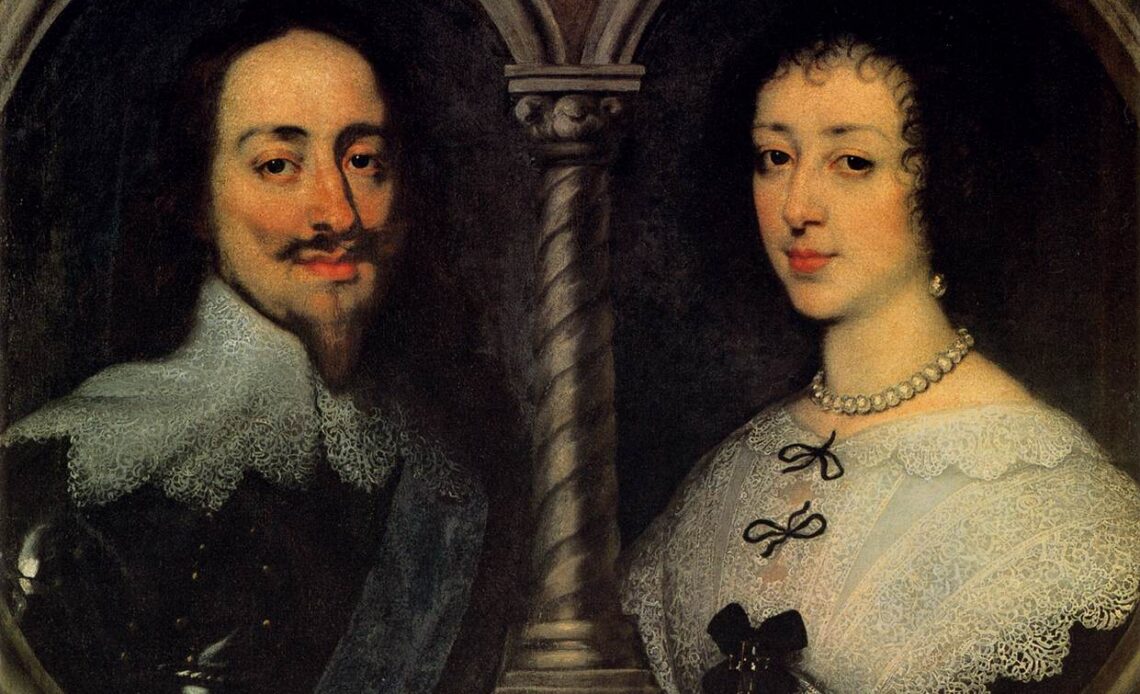 |
| On his way to the Abbey to be Crowned |
 |
| The Anointing of Charles I |
We know that Charles I took his coronation very seriously for it is then that he became the Lord's Anointed, and making an oath to God to defend the Church of England. Because the Church of England was regarded as heretical by the Roman Catholic Church, Queen Henrietta Maria was told by her confessor that she could not participate, and so she was never crowned. People later blamed her, but as a sixteen-year-old she had been told to obey her confessor in all things. From Royal Central:
His reign would end with the toppling of the monarchy but as Charles I was crowned King of England in 1626, there was little indication that the ancient ceremony heralded a time of tumult that would lead to war and death. However, as the Archbishop of Canterbury lifted St. Edward’s Crown into the hushed air of Westminster Abbey ahead of the Coronation, he heralded a moment in royal history for the very symbol of monarchy that he held would soon be destroyed as the throne fell.
Charles I was crowned on February 2nd 1626, eleven months after he had succeeded to the throne on the death of his father, James I. Since then, Charles had married but his new queen, Henrietta Maria, wouldn’t be crowned alongside him. She was Catholic and didn’t want to take part in an Anglican ceremony. Furthermore, parliament had expressed concerns about the marriage and the possibility it would lead to the lifting of restrictions placed on catholics in England. Charles assured them it would not but his concept of kingship meant that his will remained supreme. The new monarch was already contemplating changes and had no intention of politicians standing in his way.
Charles, like his father before him, believed in his divine right to rule. While the English parliament had already expressed unhappiness with this view that the crown conquered all, the new king had no time for that. He believed he had been sent to govern and his coronation was an affirmation of that.
It followed the ancient pattern, and used the ultimate symbols of royal power, the coronation regalia. Many of the pieces were linked to Edward the Confessor, the last Anglo-Saxon king of England who had been canonised in the 12th century. At the heart of the regalia was St. Edward’s Crown which had been used at the coronation of monarchs in England for four centuries. However, this would be its final outing.
The coronation of King Charles I was the manifestation of the royal power of a new monarch but it was a religious bond between a man who was certain he had been born to rule and the divinity which had invested that power in him. The anointing of the king remained the most important part of the ceremony. Charles emerged wearing the royal crown to enjoy all the usual traditions of the coronation, including the banquet that followed. But he also walked out of the Abbey more certain than ever of his divine right to rule. (Read more.)
Share


















No comments:
Post a Comment